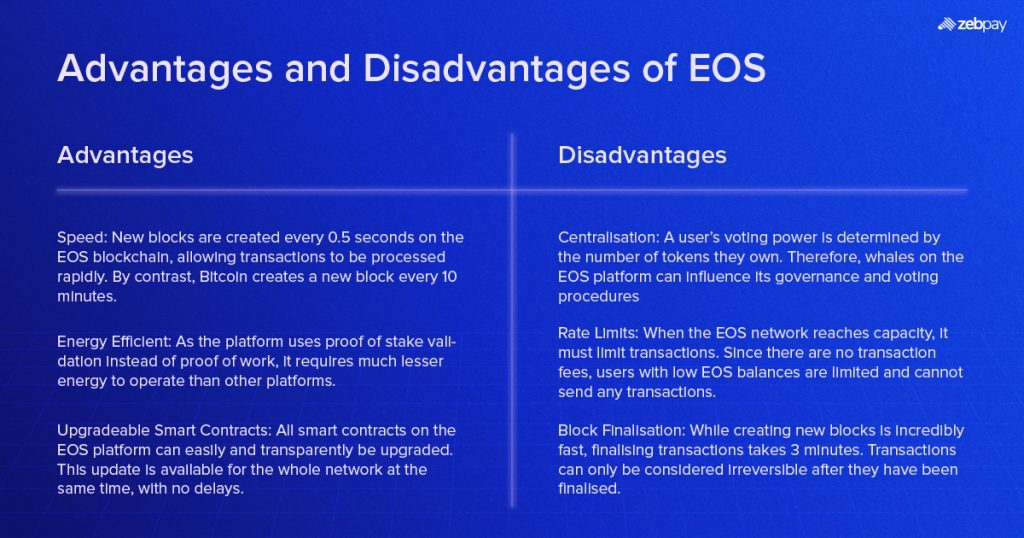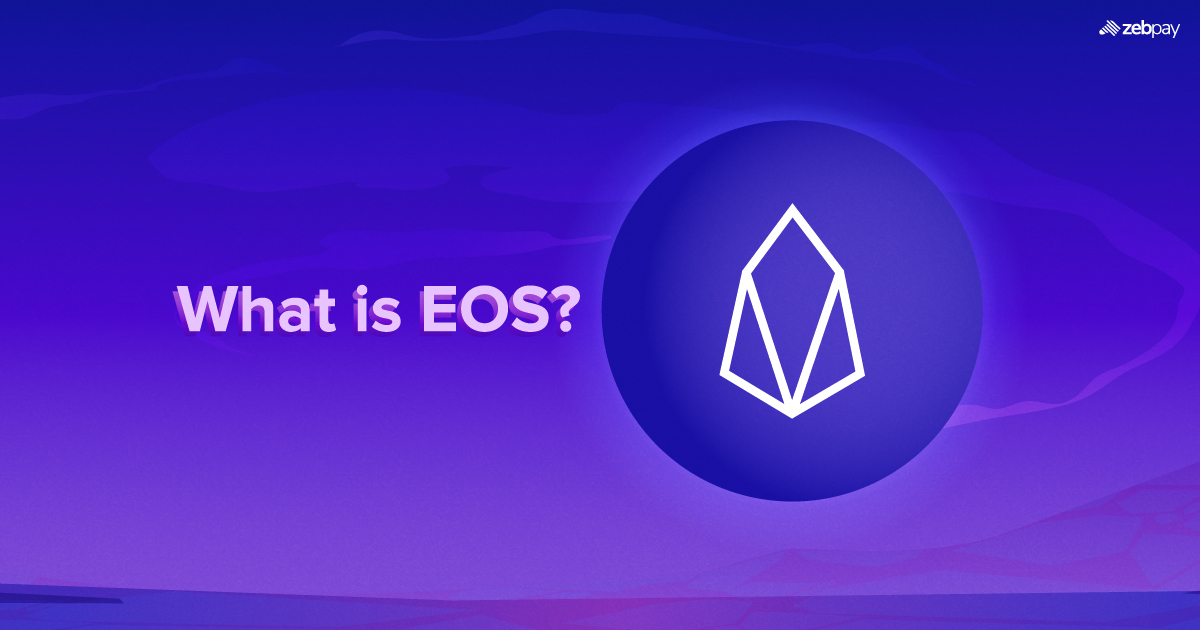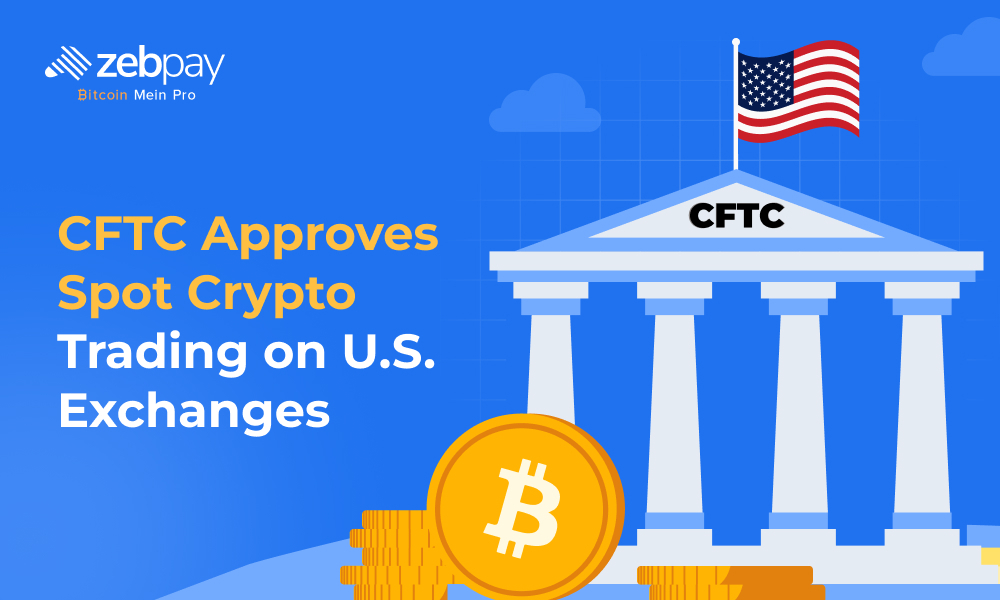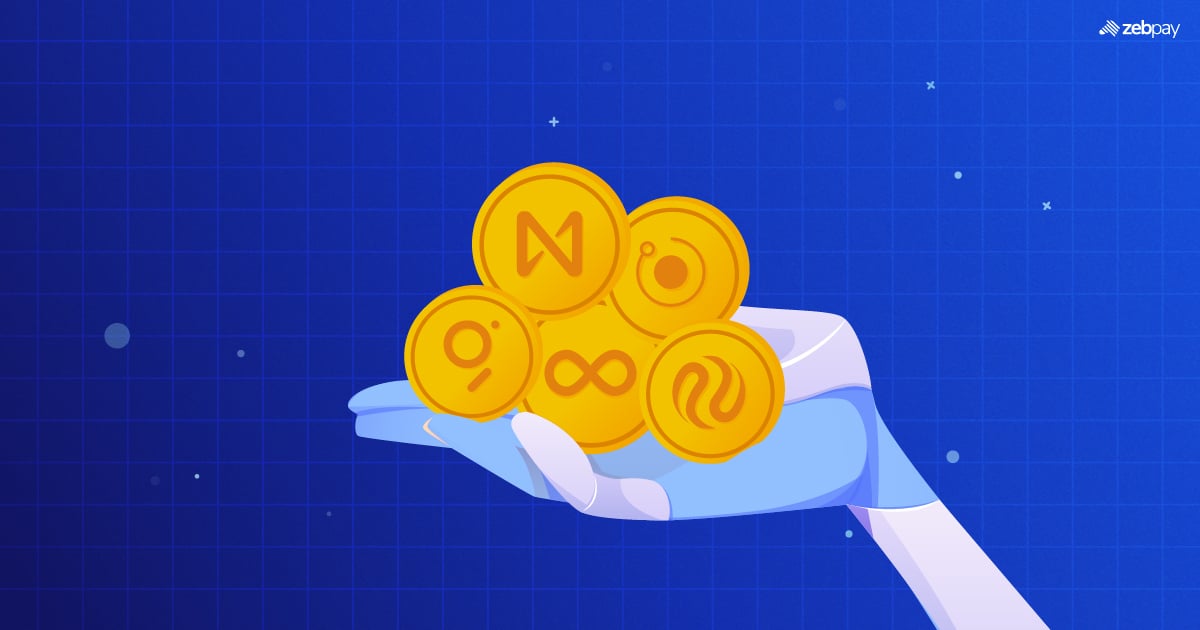We are all familiar with crypto tokens like Bitcoin, which are used for transactions. However, some other tokens are part of an entire blockchain platform. EOSIO is one of these platforms with a larger purpose. Launched in 2018, EOSIO is a decentralised, blockchain-based platform for developing, hosting and maintaining dApps. EOSIO is the platform that enables development, while EOS is its native token.
How Does EOS Work?
The platform allows developers to create dApps similar to web applications. It emulates the characteristics of a physical computer. The software then uses these concepts to regulate traffic on the network.
Characteristics such as bandwidth, computing power and memory are used. Since apps require these to function, developers must buy more of these resources using EOS. This allows users to enjoy the app hassle-free, without paying for transactions. Instead, developers must buy more network resources to enable the transactions.
For its block verification, EOS does not use proof of work like Bitcoin. They recognise that proof of work can be slow and inefficient, which prevents dApps from functioning smoothly. Instead, they use a system called Delegated Proof of Stake (DPoS). Under this system, every EOS holder receives voting rights. They use these rights to elect representatives to validate new blocks and add them to the blockchain.
Validation rewards are also determined by the community. “Block producers” or the elected validators publish the number of tokens they expect to receive for adding new blocks. The reward is then decided based on the median value quoted by all block producers. To prevent misuse of the system, the total hike in block rewards cannot exceed 5% in one year.
Advantages and Disadvantages of EOS

Benefits of EOS
Zero Transaction Fees
Transactions in EOS do not reduce your account balance. There are no transaction or gas fees on the platform, which enables dApps to function seamlessly.
To send any transaction on the EOS network, EOS staking is used. These staked tokens allow you access to a part of the network’s resources. The more resources you have, the more transactions you can send.
Scalability
As a developer, you want your dApp to always be up and running. EOSIO allows you to develop and expand your application for as many users as needed. Since the network resources available to you depend on your staked tokens, you can always stake more EOS to have more bandwidth available.
The platform also offers more transactions per second than many other popular crypto platforms.
Security
Block producers have the power to freeze EOS dApps and accounts . Any flaw in a dApp deployed on blockchains can have consequences for the network as a whole. It may even allow hackers to steal funds from the network. EOS prevents this by freezing faulty dApps until the issue is resolved.
Concept of Accounts and Wallets in EOS
Accounts and wallets can be different in EOS. An account on the EOS network is linked to public and private keys. These accounts can be controlled by multiple people, depending on the permissions granted. It has two permission, owner and active.
Active permissions are used for daily operations on the blockchain. They allow you to transfer funds and vote on network decisions. On the other hand, owner permissions determine who is considered the holder of the account. Someone with owner permissions can do all active permission tasks, but they have additional functionality like changing owner or active permissions.
Read more: What is Blockchain Layers?
Wallets are used to store the public and private keys required to access your account. There is no link between your account and your wallet except for the keys stored within it.
Is EOS A Good Investment?
EOS has been gaining a lot of popularity over the last few years. It offers fantastic development tools to create seamless dApps that are fast and scalable. EOS also allows you to create unique solutions for issues such as logistics and social impact.
Many have cast doubts on the platform due to its governance procedure. Some new policies seek to fix the areas of concern. However, centralisation and collusion remain threats to the system even today.
Only once these glaring concerns have been resolved can EOS be a fantastic investment opportunity. Currently, investing in the token comes with some major caveats, and you must decide for yourself how much you value decentralisation on the platform.
EOS is currently trading at $1.54 per token with a market cap of $1.53 billion. It hit its all-time high of $22.89 in April 2018.







